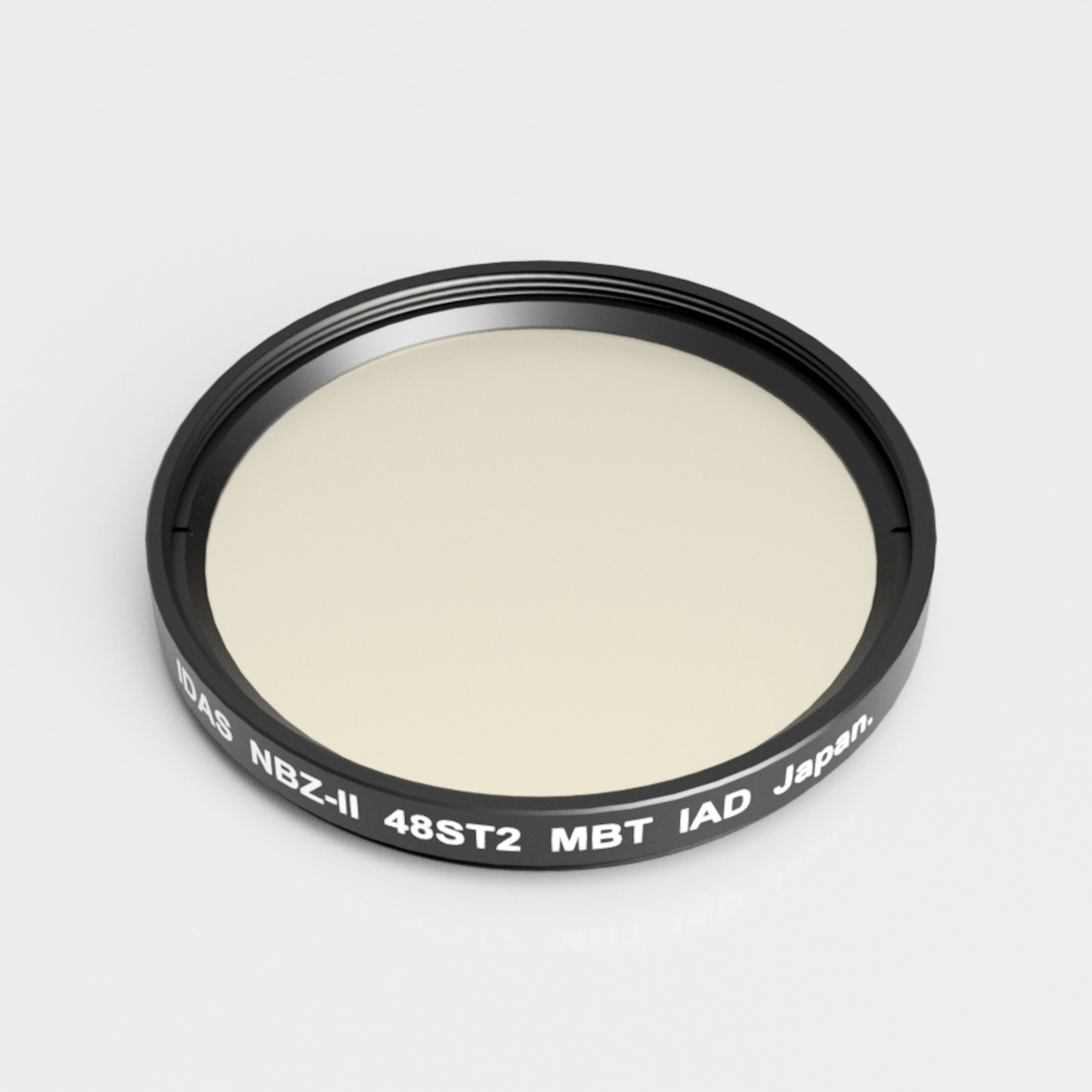TOTAL: HK$ 0
Brands
Categories
Product name or code
Status
Price Range
toSequence
Search

Original Price:HK$2200
[IDAS NBZ-ll Filter]
Capture beautiful nebulae even under urban light pollution -
IDAS's narrowband filter for astronomical photography, "NBZ II," is a high-performance filter with a dual-band design that simultaneously transmits the wavelengths of Hα (656.3 nm) and OIII (500.7 nm).
Especially in astronomical photography in urban and suburban areas, it significantly reduces the effects of light pollution while efficiently passing only the emission wavelengths of the main nebulae, resulting in sharp, high-contrast nebula photographs.
[Features]
・Dual band design compatible with both Hα and OIII
・Significantly reduces the effects of light pollution and moonlight
・Compatible with a wide range of cameras and telescopes (M48 P0.75mm)
・Made in Japan, high-precision glass, AR coating
[Specifications]
・Screw diameter: M48mm
・Pitch: P0.75mm
・Substrate thickness: 2.0mm
・Transmission characteristics: High transmission mainly in the Hα / OIII wavelength range
[Recommended for]
・Those who want to photograph nebulae in areas with a lot of light pollution
・Those who want to take beautiful pictures of Hα and OIII targets (M42, North American Nebula, etc.)
・Those who use modified cameras, monochrome CMOS, and cooled cameras
The IDAS NBZ-II is a new dual band nebula booster filter - the successor to the NBZ (NBZex) filter. The FWHM of the NBZ-II is 8nm (+/=0.4nm) at OIII, and *9.5nm (+/-0.4nm) at H-alpha respectively. This has the same anti-Haloing characteristics as the NBZ did. For this product, we will provide a test report of the actually measured optical properties with each individual NBZ-II filter piece we ship.
*We originally designed this value to be 10nm, but after runing some production lots, we have now confirmed that the average is 9.5nm (+/-0.4nm).
Feature:
The transmittance curve of interference filters will naturally shift towards the shorter wave length side against oblique light incidence, and this tendency will be more noticeable as the inncidence angle becomes higher as shown in the following figure.
Some of the competitive 7nm or narrower filters will decrease in transmittance by 50% or more when used in a fast optical system (around F2), while the NBZ-II retains 80% or more of the transmittance under the same conditions.